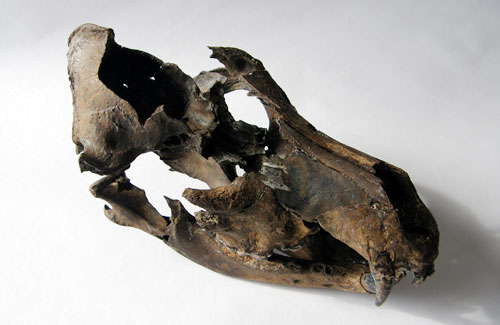Küchelmann, Hans Christian (2009): Ein Canidenskelett (5. – 8. Jh.) aus der Wurt Jemgumkloster (Gemarkung Holtgaste, Gde. Jemgum, Ldkr. Leer/Ostfriesland). – Nachrichten aus Niedersachsens Urgeschichte 78, 57-78
[A canid skeleton (5th-8th century) from the Jemgumkloster terp (Holtgaste, Jemgum, Rural District of Leer, East Frisia)]
Abstract
At the site of the Jemgumkloster terp mound in Frisia, Germany, a carefully buried skeleton of a large mature male canid was excavated. It had a fractured skull. Its size and the morphological features were inbetween those of a large dog and a wolf. The features of the skeleton, which are described in detail, allow it to be identified as that of a large dog. Pathological features, anatomical anomalies and human tool marks are discussed. The find is interpreted in the context of chronologically and culturally comparable examples.
Download (pdf 0,9 MB)


Küchelmann, Hans Christian (2009): Ein Canidenskelett (5. – 8. Jh.) aus der Wurt Jemgumkloster (Gemarkung Holtgaste, Gde. Jemgum, Ldkr. Leer/Ostfriesland). – Nachrichten aus Niedersachsens Urgeschichte 78, 57-78
[A canid skeleton (5th-8th century) from the Jemgumkloster terp (Holtgaste, Jemgum, Rural District of Leer, East Frisia)]
Abstract
At the site of the Jemgumkloster terp mound in Frisia, Germany, a carefully buried skeleton of a large mature male canid was excavated. It had a fractured skull. Its size and the morphological features were inbetween those of a large dog and a wolf. The features of the skeleton, which are described in detail, allow it to be identified as that of a large dog. Pathological features, anatomical anomalies and human tool marks are discussed. The find is interpreted in the context of chronologically and culturally comparable examples.
Download (pdf 0,9 MB)